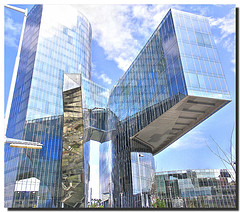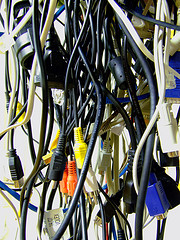July 24th, 2009 by Kevin Lindstrom | No Comments »
The Niels Bohr Library and Archives of the American Institute of Physics holds more than a thousand tape-recorded interviews. Many of the oral history interview transcripts are now online. The interviews, conducted by the staff of the AIP Center for History of Physics and many other historians, offer unique insights into the lives, works, and personalities of modern scientists.
For more information, go to Niels Bohr Library & Archives
Submitted by Kevin Lindstrom Liaison Librarian for Physics and Astronomy at the University of British Columbia.
Posted in Astronomy, General Science, Physics, Podcasts | No Comments »
July 20th, 2009 by Eugene Barsky | No Comments »

New Scientist reports about the final draft of the American Meteorological Society‘s carefully worded position paper on geoengineering. The AMS is the first major scientific body to officially endorse research into geoengineering.
From New Scientist:
The document states that “deliberately manipulating physical, chemical, or biological aspects of the Earth system” should be explored alongside the more conventional approaches to climate change. Conventional approaches means reducing emissions – “mitigation” in policy-speak – and adjusting to the unavoidable effect of climate change – known as “adaptation”.
The paper states that “even aggressive mitigation of future emissions cannot avoid dangerous climate changes resulting from past emissions. Furthermore, it is unlikely that all of the expected climate-change impacts can be managed through adaptation. Thus, it is prudent to consider geoengineering’s potential benefits, to understand its limitations, and to avoid ill-considered deployment”.
http://www.newscientist.com/article/dn17490-climate-engineering-research-gets-green-light.html?DCMP=OTC-rss&nsref=online-news
** photo by courambel
Posted in Atmospheric Science, Chemical and Biological Engineering, Chemistry, Earth and Ocean Sciences, General Science, Geography, Main, Materials Engineering, Physics, Uncategorized | No Comments »
July 8th, 2009 by Eugene Barsky | No Comments »

Yesterday’s article in NYT fascinated me with its title – “As Unbreakable as … Glass?”
There is lots of research in this area that you can find in Web of Science database, Compendex database, and of course in the standard-bearer for anything chemical – SciFinder Scholar database.
We also own hundreds of books on this topic. Here is the short list for Glass.
** photo by smb
Posted in Amusing stuff, Chemical and Biological Engineering, Chemistry, Civil Engineering, Main, Materials Engineering, Science - undegraduate classes | No Comments »
July 3rd, 2009 by Eugene Barsky | No Comments »

A very recent article on PLoS One is worth the read –
Bollen J, Van de Sompel H, Hagberg A, Chute R, 2009 A Principal Component Analysis of 39 Scientific Impact Measures. PLoS ONE 4(6): e6022. doi:10.1371/journal.pone.0006022
Abstract:
Background
The impact of scientific publications has traditionally been expressed in terms of citation counts. However, scientific activity has moved online over the past decade. To better capture scientific impact in the digital era, a variety of new impact measures has been proposed on the basis of social network analysis and usage log data. Here we investigate how these new measures relate to each other, and how accurately and completely they express scientific impact.
Methodology
We performed a principal component analysis of the rankings produced by 39 existing and proposed measures of scholarly impact that were calculated on the basis of both citation and usage log data.
Conclusions
Our results indicate that the notion of scientific impact is a multi-dimensional construct that can not be adequately measured by any single indicator, although some measures are more suitable than others. The commonly used citation Impact Factor is not positioned at the core of this construct, but at its periphery, and should thus be used with caution.
Frankly, I was surprised by the authors’ conclusion, particularly with this piece: “Our results indicate that the JIF and SJR express a rather particular aspect of scientific impact that may not be at the core of the notion of scientific “impact”. Usage-based measures such as Usage Closeness centrality may in fact be better “consensus” measures.”
I am used to be inquired about Journal Impact Factor (JIF) so often in academia and know that it used for tenure consideration in many departments in UBC.
** photo by testone 22
Posted in Astronomy, Atmospheric Science, Chemical and Biological Engineering, Chemistry, Civil Engineering, Earth and Ocean Sciences, General Science, Geography, Main, Materials Engineering, Mathematics, Mechanical Engineering, Physics, Podcasts, Science - undegraduate classes, Statistics, Wood Sciences | No Comments »




